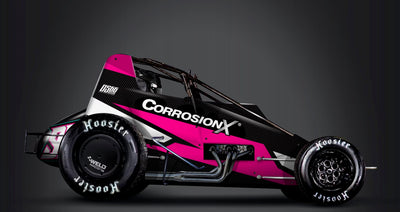Information & Tips
Thank you for purchasing a Handi-Spray™ application system for spraying CorrosionX Aviation and other liquids. There is no more effective, thorough or easy way to protect aircraft from the ravages of corrosion.
In each Handi-Spray kit, you will find a DVD showing the basics of how to use your system. You can also view it online here
CorrosionX Aviation Unique Properties
The only foggable corrosion prevention and control product that is both recommended by the Joint Council on Aging Aircraft and meets the current Mil Spec for corrosion prevention and water displacement on airframes (MIL-PRF-81309F) Unique Polar Bonding formula seeks out and passivates any metal surface that can oxidize. Unlike common corrosion inhibitors, CorrosionX will actually “kill” existing corrosion and keep any new corrosion from forming. 39,000+ volt dielectric characteristic, so it’s safe on wiring, contacts, switches and avionics. Will not add measurable weight to the airframe. Nontoxic, nonflammable and non-carcenogenic. Requires no special safety equipment to apply. If applying inside a hanger, would recommend the use of a cotton mask.
Spray System Setup
CorrosionX Aviation has no shelf life. As long as you keep the system capped where the product cannot be contaminated by dust and dirt, you can store it in the sprayer indefinitely. Provide shop air at 80 psi or more. Use the regulator (black knob) to adjust your shop air down to 80 psi if necessary. To do so, simply pull black knob out, make the adjustment, then snap it back in to lock-in your adjustment. Use the brass knurled adjustment screw to adjust the ratio of product to air. A properly adjusted Handi-Spray system should emit a super-fine fog that looks almost like smoke regardless of the wand type used. Once you’ve completed spraying operations, simply disconnect the air supply, roll up the spray hose and roll your Handi-Spray system to a secure spot.
Areas To Avoid
- Engine’s air intake
- Oxygen fittings
- Membrane switches
- LCD displays
- Autopilot servo clutch
- Brakes or other friction-operated devises.
Application Tips
- We recommend fogging airframes once every two years. It is better to fog an airframe lightly every other year than it is to drench or overspray the aircraft.
- An ideal time to spray is when an airplane is already open for an annual inspection.
- Fog CorrosionX Aviation lightly into the airframe. CorrosionX will seek to bond to any exposed metal surface. So let the product do all the work.
- It is better to treat trouble areas (like the bilge and area near the cargo door) more often lightly rather than dousing the area.
- Excess product will either make its way down to the bilge over time, weep out of drain holes, or anywhere (like a lap seam or around a rivet head) where the paint barrier is broken. If excess product weeps out, simply wipe it up with a shop rag or paper towel.
- When looking at a treated area through an inspection port, an ideal application would look like a mirror you just exhaled upon – all surfaces should have a haze on them, but you don’t want to see many drips. If you see a lot of drips, you’re spraying too much.
- After treating an airplane, leave cockpit and cargo doors open to let the plane air out overnight whenever possible.

